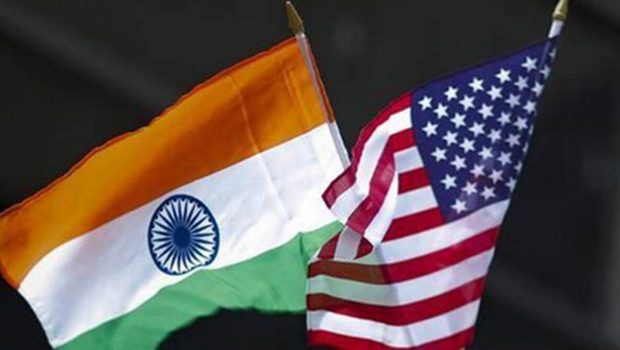The key to US-India partnership: Defence and technology cooperation
In a 2009 interview, former Singapore Prime Minister Lee Kuan Yew anticipated the rise of a multipolar world and opined that “the Indians are going to be themselves, they will never be everybody’s lackey”. The senior statesman rebuffed suggestions of the 21st century as a bipolar era dominated by the US and China, cast in the mould of the US-Soviet rivalry, and was prescient in foreseeing the emergence of a multipolar world, well before it was obvious.
The possibility of India’s continuing rise over this century seems to be on a stronger wicket today than it did a decade ago, marred as the early 2010s were by political instability and economic turmoil. But such tectonic shifts are, by definition, not hostage to ephemeral forces of the moment — in the extant case, they are part of a larger reversion to the mean, with Asia once again taking its place as the geo-economic epicentre of the world.
Prior to the era of colonial exploitation followed by self-inflicted stagnation due to communist economic policies adopted across the region, the ancient civilisations of India and China dominated the world economy. This was not due to large populations alone — there existed a deep history of scientific innovation and technological prowess, which spread by osmosis and intercourse from the East to the West. The West, led principally by Great Britain, then stole a march over Asia with the advent of the Industrial Revolution. A pyrrhic victory for Britain in the Second World War marked the formal transfer of the Western bloc’s leadership to the US, which later became the preferred destination for high-quality human capital migrating out of Asia because of the government-enforced economic hara-kiri committed by leaders like Mao, Jawaharlal Nehru and Indira Gandhi.
Cut to the 2020s, and there is a transformed landscape, nothing like what existed even 20 years ago. China is now home to a manufacturing-led and technology-driven economy, competing head-on with the US in areas like biotech, robotics, artificial intelligence, and advanced materials. India, which faced an economic setback when the liberalisation process largely came to a halt between 2004-2014, is back on its feet, with consistent commitment and concerted policy action focused on building domestic capabilities in critical technologies as well as in key manufacturing industries and pursuing important structural economic reforms.
The confusion between the US-China and India-China relationships has also been clarified. From seeing non-democratic China as a benign partner, the US now sees it as a threat, the present preoccupations in Europe notwithstanding. India, which for a time welcomed Chinese involvement in its economy, has also recalibrated after the 2020 Galwan face-off.
Triangular romances are always awkward, and though decisive clarity on who stands where took time to crystallise, it is welcome. Unlike India and the US, which are both well-established republics with deep democratic cultures, China is “a party with a state attached to it”, to use the pithy and evocative description by former Foreign Secretary, Vijay Gokhale. Being inextricably linked by geography, Beijing’s ambition to dominate its periphery and proximate region is of particular concern to India.
Given this background, India and the US are natural allies to confront the challenges posed by an expansionist and aggressive China in the Indo-Pacific and beyond. There are clear signals of unprecedented cooperation between the two countries in areas like national security, defence production and most prominently, new-age information technology and internet industries where American financial firms and blue-chip corporates are contributing growth capital as well as know-how.
For the India-US strategic partnership to shift to the next orbit, closer cooperation in scientific research and critical emerging technologies is imperative, as the recently concluded India-US 2+2 Ministerial Dialogue recognised. In particular, as some American lawmakers highlighted when providing India with a specific exemption under Countering America’s Adversaries through Sanctions Act (CAATSA) — a federal law that seeks to impose sanctions on countries that engage in military trade with states such as Russia — that the American defence industry should contribute to reducing India’s dependence on Russian armaments and equipment.
Connected to the expansion of defence-industrial ties is the broadening of technology collaboration in areas like artificial intelligence, drones, advanced materials, space technology, semiconductors, and biotech in India, beyond the consumer tech and software sectors. The Indian government’s efforts to promote venture capital investment and entrepreneurship in these frontier technology sectors should be seen in this larger strategic context.
The tone, tenor and trajectory of the India-US relationship are proving to be unlike any that the US has had before — strictly speaking, India is not a part of the geopolitical and cultural West yet is “westernised” enough to be comfortable in that bloc. Additionally, unlike some other countries in the Indian Subcontinent, India never has been nor will be anybody’s lackey. Demographic and economic trends firmly position India as a global force that will have the weight to stride alongside America and China, who would constitute the other two geopolitical — and ideological — poles over the 21st century.
Lee Kuan Yew remarked in the same 2009 interview that the US would have to share leadership with China and India in the second half of the 21st century and “make space” for them. Events over the last decade have clarified the landscape further. India and the US are — and should be — closely aligned in addressing the threat posed by an authoritarian party controlling a state. Indeed, the combined financial firepower, human capital, and technology prowess available between the two countries would place the world on a safer and more stable plane. The India-US partnership is, in that sense, not a nicety but a necessity for the new multipolar world order.
The writer is managing director of Navam Capital and co-founder of the India Enterprise Council








Gloss